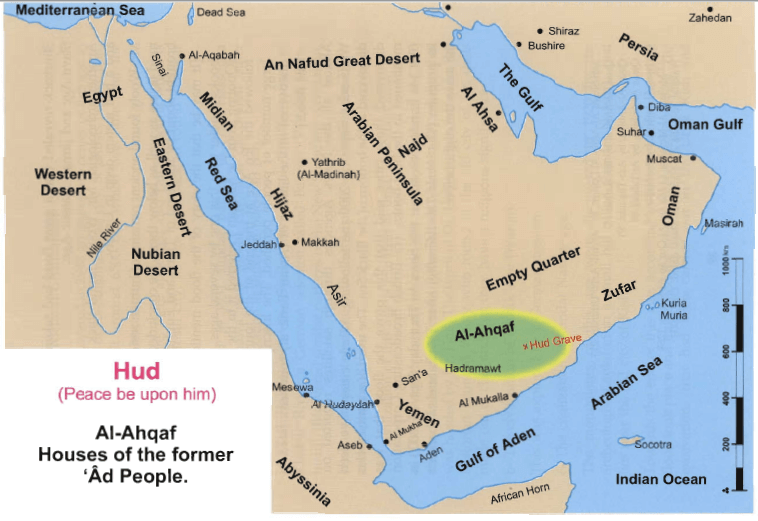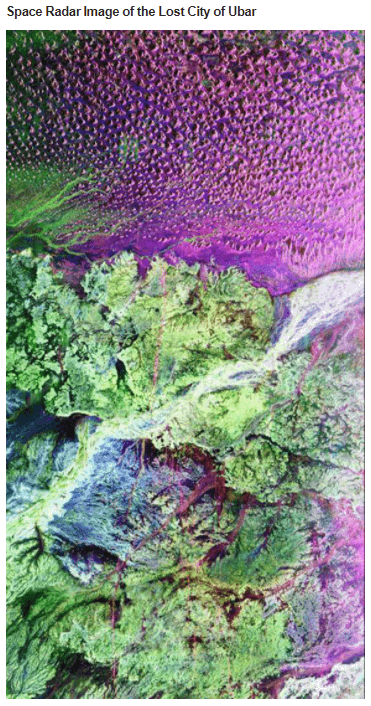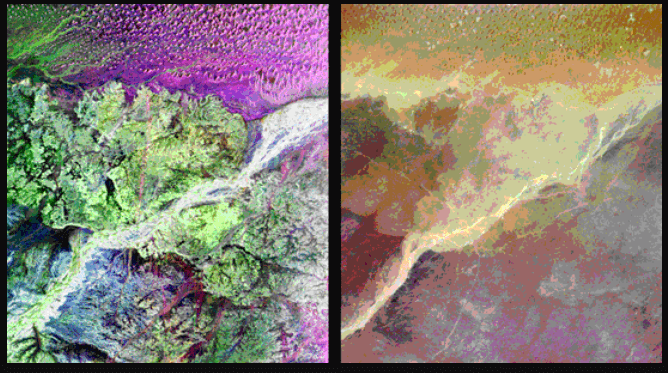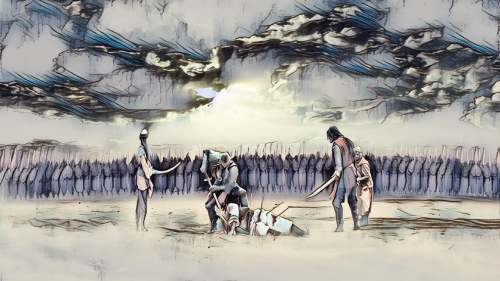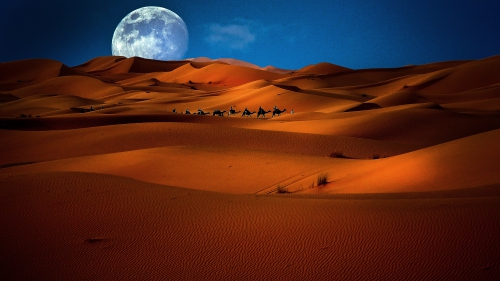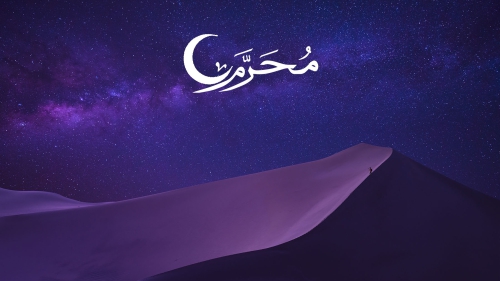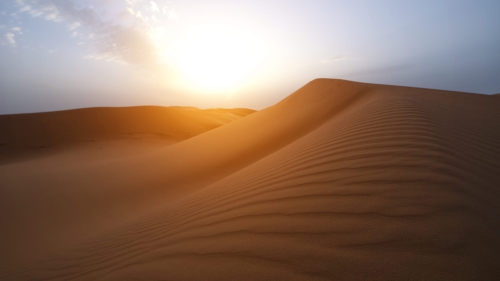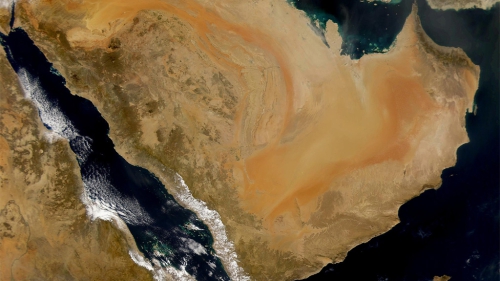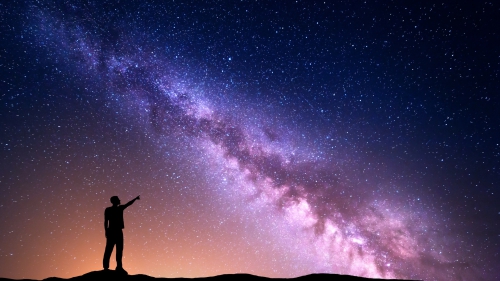Aad's Lost City: Unveiling its Quranic Origins via Satellite Imaging

This article is a book excerpt from "The Clear Signs Of The Quran", the chapter is on Prophet Hud (AS) – The Clear Signs of the Aad Community’s Existence (4000+ years back) and its Destruction by Ground-Penetrating Satellite Imaging.
Prophet Hud (AS) is mentioned seven times in the Quran, with a chapter in his name. A hadith by Ibn Abbas (RA) reports that “Prophet Hud (AS) was the first to speak the Arabic language.” The people of 'Aad, to whom Prophet Hud was sent, lived in carved sandhills in the Arabian Peninsula's southern part. The people of 'Aad were destroyed and referred to as the ‘first people of ‘Aad.’ The ‘second people of ‘Aad’ were the inhabitants of Qahtan, Saba, and their descendants. But it is also said that the second people of ‘Aad were the same as Thamud.
In the Old Testament, reference is made to a descendant of Noah named Eber. In some traditions, he is called Heber and known as the father of the Hebrew language1The International Standard Bible Encyclopedia, - http://www.studylight.org/enc/isb/view.cgi?number=T2864. However, in Islam, he is known as Hud (AS) and is one of four Arabic prophets, the others being Saleh (AS), Shuaib (AS), and Muhammad ﷺ. Renowned Islamic scholar of the 14th century, Ibn Kathir, reports that Ibn Jarir also claims that Hud was Nuh's (AS) descendent.
Sent by God to his brethren, Hud spread the message that God is One and to worship Him alone. It was the same message laid by all the prophets of God. Hud said to his people, "O my people, worship God, you have no other God but Him." (Quran 11:50) Hud belonged to the ancient civilization known as ‘Aad, and its capital city is believed to have been the fabled city of Ubar, known in the Quran as Iram (Quran 89:6-7).
‘Aad is believed to have been situated in the windswept hills between Oman and Yemen. The people were known to build lofty towers, and thus the area became known as the land of a thousand pillars. It was a civilization unlike any other. God blessed ‘Aad and its people. He provided them with fertile land and abundant agriculture, many children, an ample supply of livestock, and easy access to water resources. The people themselves were described as tall, healthy, and well-built.
In many ways, ‘Aad could be described much like many of today's affluent societies. There was an excess of wealth, and the proud, arrogant people were not satisfied with fulfilling their basic needs. They began to build towers and dwellings merely to display their wealth, and they accumulated worldly possessions as if they were people destined to live forever.
The rulers and leaders of ‘Aad were powerful tyrants. Their wealth did not make them gentle, as sometimes happens, but instead they grew strong and dominated the lands around them. Satan was among them and made their deeds seem good to them. Their arrogance and pride grew, and the worship of idols became prevalent.
Prophet Hud (AS) was also a strong man, but he used his strength to confront the problems that abounded in his society. However, the people were too proud to listen. They did not want Hud (AS) to point out their mistakes, but he persisted in calling them to righteousness.
Hud (AS) tried to explain to his people that seeking God's forgiveness for their rebelliousness and arrogance would increase their strength and wealth. God, he said, would reward their repentance with abundant rain and an increase in power. In the manner of arrogant people throughout the time, the people of ‘Aad looked at Hud (AS) with disdain, thinking that they were the most powerful nation in existence.
The wealthy, arrogant people of ‘Aad argued with Hud (AS) about the nature of the Day of Judgment. They believed that after death, the body turned to dust and was swept away by the wind. Like many people today, the people of ‘Aad believed that life's purpose was to accumulate wealth, prestige, and possessions. When Hud (AS) made them confront the reality of their lives and pointed out that they were far from the One God, their arrogant hearts swelled with pride, and they accused him of being crazy. They wondered why a man who ate and drank, just like them, could have such a different view of life.
With their eyes firmly fixed on wealth and luxury, ‘Aad’s people convinced themselves that following Hud (AS) would mean that they, too, were crazy.
“There is nothing but our life of this world! We die, and we live! We are not going to be resurrected! He is only a man who has invented a lie against God, but we are not going to believe in him.” (Quran 23:37-38)
Eventually, the people of ‘Aad looked at Hud and said, “We understand why you are crazy. Our god's (idols) have harmed you because you insulted them.” (Quran 11:53). Hud turned to God and renounced his people. He knew that God's punishment would be swift and severe. A drought spread throughout the once fertile and abundant land. The people looked to the sky, hoping to see signs of rain. They saw a cloud on the horizon, mistaking it for rain. However, it was God’s punishment.
The new archeological and geological evidence of the destroyed City of ‘Aad – Iram/Eram/Ubar
The Rub’ Al-Khali basin occupies an area of over 300,000 km2 in southeast Saudi Arabia. The basin is covered by the largest contiguous sand sea in the world, with dunes 150 m or more in height.
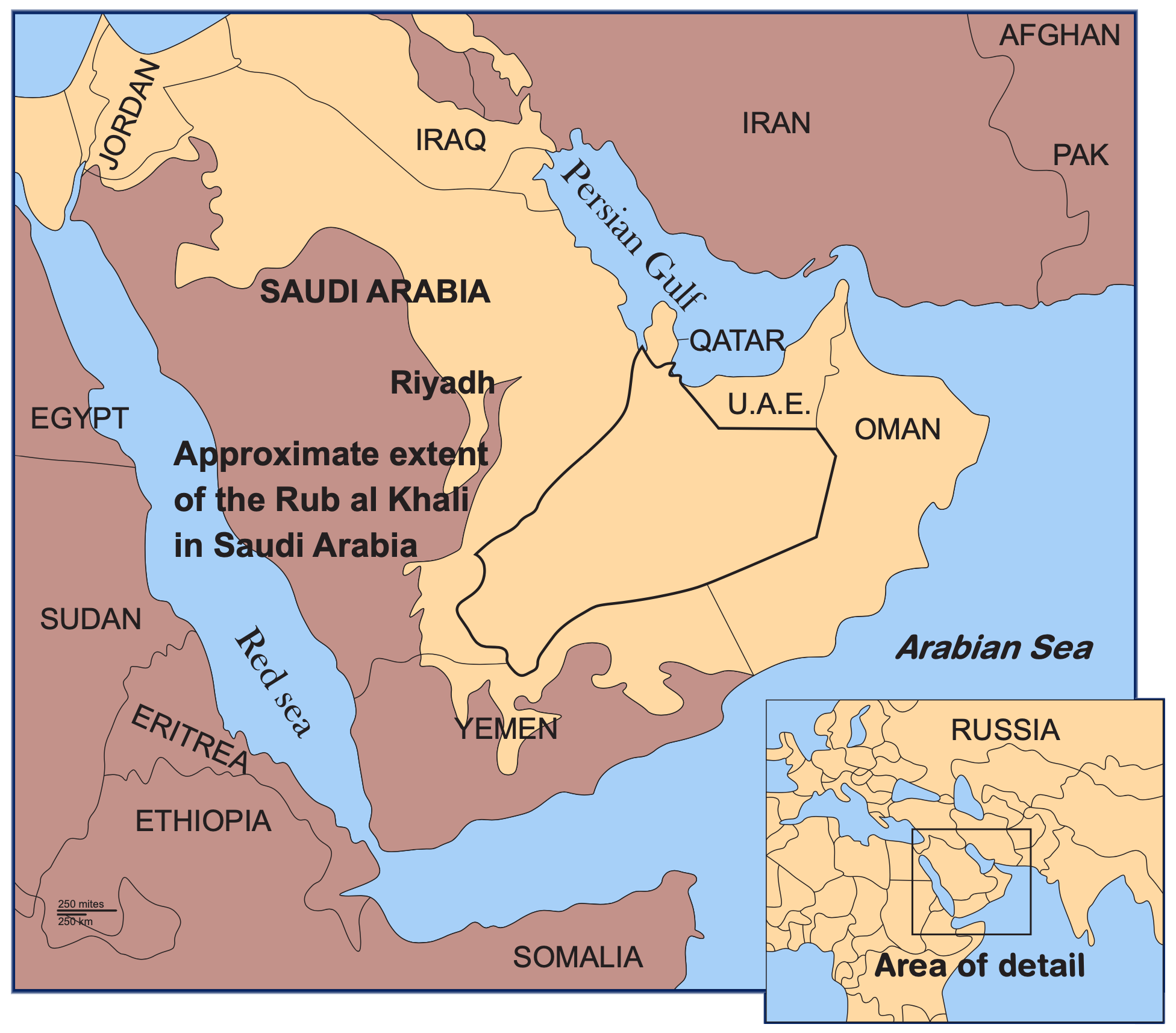
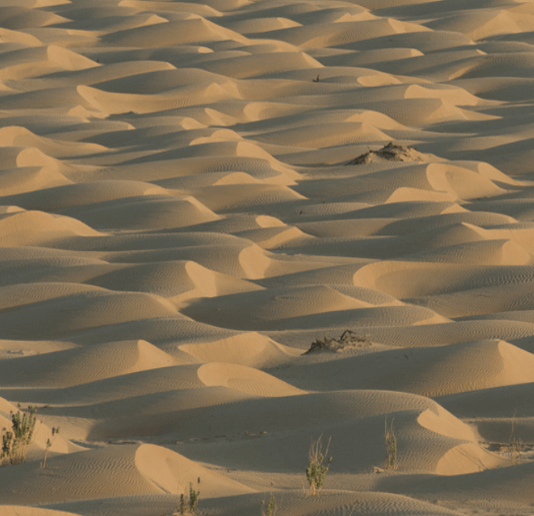
Figures 1 & 2 - Rub al Khali Desert location and the Sand Dunes.
How radar sees the buried city ‘Aad under the dunes of Rub’ Al-Khali
Ground-penetrating radar (GPR) is a geophysical method that uses radar pulses to image the subsurface by reflecting and refracting the signal as it meets different types of material as it penetrates deep under dunes, as shown in the NASA illustration below. Using this technique, thousands of years of history are revealed. This nondestructive method uses electromagnetic radiation in the radio spectrum's microwave band (UHF/VHF frequencies) and detects the reflected signals from subsurface structures.
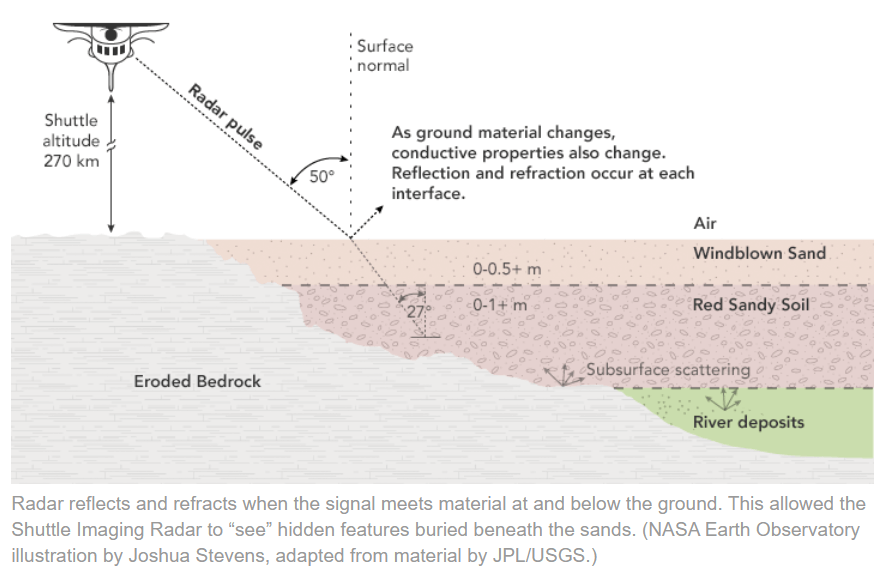
Presence of flora, fauna, and human activity by scientific evidence
Along the desert's middle length, several raised, hardened areas of calcium carbonate, gypsum, marl, or clay were once the site of shallow lakes. These lakes existed from 6,000 to 5,000 years ago and 3,000 to 2,000 years ago. The lakes are thought to have formed due to "cataclysmic rainfall," similar to present-day monsoon rains. The geologic evidence gathered by Saudi Aramco indicates lakes in the Mundafen area in the southwest of the Rub Al-Khali show evidence of lasting longer, up to 800 years, due to increased runoff from the Tuwaiq Escarpment.2Clark, Arthur (June 1989). Amdt, Robert (ed.). "Lakes of the Rub' al-Khali". Saudi Aramco World. 40 (3): 28–33. ISSN 0003-7567. Retrieved 22 August 2010
Archeological evidence suggests that the lakes were home to various flora and fauna. This is astonishing in contrast to the current Rub’ Al-Khali environment – one of the planet's most arid, hot, and uninhabitable places. Fossil remains indicate the presence of several animal species, such as hippopotamus, water buffalo, and long-horned cattle. When conditions were suitable, the lakes also contained tiny snails, ostracods, and freshwater clams. Deposits of calcium carbonate and opal phytoliths indicate the presence of plants and algae. There is also evidence of human activity dating from 3,000 to 2,000 years ago, including chipped flint tools, but no actual human remains have been found. The Asiatic cheetahs, once widespread in Saudi Arabia, are regionally extinct from the desert.
History of Rub’ Al-Khali – the destroyed cities of Ubar or Iram/Eram of ‘Aad
Desertification (a type of land degradation) has increased through recent millennia. Before desertification made the caravan trails leading across the Rub’ Al-Khali difficult, the caravans of the frankincense trade crossed now virtually impassable stretches of wasteland until about 300 CE. It has been suggested that Ubar or Iram, a lost city, region, or people (Aad, Thamud in the Quran) depended on such trade3 "Ubar". Madain Project. Retrieved 11 April 2019.. The archaeological remains include a fortification/administration building, walls, and bases of circular pillars. The traces of camel tracks, unidentifiable on the ground, appear in satellite images along with forts and watering spots that would have been convenient for passing caravans4Fisher, J.; Fisher, B. (1999). "The use of KidSat images in the further pursuit of the frankincense roads to Ubar"..
The destructive windstorm mentioned in the Quran and its evidence by imaging from space
Regarding how Allah dealt with the communities of ‘Aad, Thamud, and Pharoah, the Quran Says:
سُوۡرَةُ الفَجر
أَلَمۡ تَرَ كَيۡفَ فَعَلَ رَبُّكَ بِعَادٍ (٦) إِرَمَ ذَاتِ ٱلۡعِمَادِ (٧) ٱلَّتِى لَمۡ يُخۡلَقۡ مِثۡلُهَا فِى ٱلۡبِلَـٰدِ (٨) وَثَمُودَ ٱلَّذِينَ جَابُواْ ٱلصَّخۡرَ بِٱلۡوَادِ (٩) وَفِرۡعَوۡنَ ذِى ٱلۡأَوۡتَادِ (١٠) ٱلَّذِينَ طَغَوۡاْ فِى ٱلۡبِلَـٰدِ (١١) فَأَكۡثَرُواْ فِيہَا ٱلۡفَسَادَ (١٢) فَصَبَّ عَلَيۡهِمۡ رَبُّكَ سَوۡطَ عَذَابٍ (١٣) إِنَّ رَبَّكَ لَبِٱلۡمِرۡصَادِ (١٤)
“Have you not seen how your Lord dealt with ‘Aad? (6) Erum of the pillars. (7) The like of which was never created in the land. (8) And Thamud—those who carved the rocks in the valley.(9) And Pharaoh of the Stakes. (10) Those who committed excesses in the lands. (11) And spread much corruption therein. (12) So your Lord poured a scourge of punishment upon them. (13) Your Lord is on the lookout. (14)” (Quran 89:6-14) 5Dr. Mustafa Khattab
One fateful day, the weather changed. The burning heat changed to biting cold, and the wind began to howl. The savage wind increased with each new day, and the people began to seek shelter. The windstorm raged for more than a week. It ripped apart tents and dwellings; it whipped away clothing and tore the skin from the body.
And in yet another verse, we see how strong winds could have buried the dwellings of ‘Aad in sand as reflected in the Quran:
وَأَمَّا عَادٌ۬ فَأُهۡلِڪُواْ بِرِيحٍ۬ صَرۡصَرٍ عَاتِيَةٍ۬ (٦) سَخَّرَهَا عَلَيۡہِمۡ سَبۡعَ لَيَالٍ۬ وَثَمَـٰنِيَةَ أَيَّامٍ حُسُومً۬ا فَتَرَى ٱلۡقَوۡمَ فِيہَا صَرۡعَىٰ كَأَنَّہُمۡ أَعۡجَازُ نَخۡلٍ خَاوِيَةٍ۬ (٧)
“And as for ’Ȃd, they were destroyed by a furious, bitter wind (6) which Allah unleashed on them non-stop for seven nights and eight days, so that you would have seen its people lying dead like trunks of uprooted palm trees. (7)” (Quran 69:6-7)
Ibn Kathir tells us that the violent storm did not stop until the entire region, once lush and green, was reduced to ruins and swallowed by the sands of the desert. Only Hud (AS) and his small band of followers were saved and are believed to have migrated to the Hadramawt area of what is today known as Yemen. Prophet Hud (AS) lived in Hadramawt until he died near Tarim in the valley of Bharhut6https://www.islamiclandmarks.com/various/tomb-of-hud-as.
The location of 'Ad People' where Prophet Hud (AS) preached.7Atlas of the Quran, Dr. Shauqi Abu Khaleel, Darul, Salam Publications.
The satellite imaging of the buried Ubar area
According to the 15th-16th century Quranic commentary, Tafsir al-Jalalayn, Hud, and his people lived in the Valley of Ahqaf in Yemen. This is the same time and place where Hud (AS) preached, which was lost in a significant sandstorm that buried the entire area. In 1992, the fabled lost city was discovered using remote sensing data. Satellite imagery exposed a large sand-dunes area, which lies a major dry streambed. This area is the same as Ubar, which was said to be a remote desert oasis and a significant trading center inhabited by powerful and wealthy people. Ubar is currently under excavation, and evidence has revealed an octagonal fortified city with 30-foot towers and thick walls.
Satellite image of Ubar, Al-Ahqaf area, in the Rub Al-Khali desert.8Jet Propulsion Laboratory, Caltech Institute of Technology. https://www.jpl.nasa.gov/spaceimages/details.php?id=PIA01721
The above illustration is a radar image of the region around the lost area of Ubar in southern Oman, in the Arabian Peninsula. The ancient city was discovered in 1992 using remote sensing data. Archeologists believe Ubar existed from about 2800 BC to about 300 CE.
This image was acquired on orbit 65 of the space shuttle Endeavour on April 13, 1994, by the Spaceborne Imaging Radar C/X-Band Synthetic Aperture Radar (SIR-C/X-SAR). The prominent magenta-colored area is a region of massive sand dunes of Rub’ Al-Khali, which are bright reflectors at both L and C-band. The main green areas (L-HV) are rough limestone rocks forming a rocky desert floor. A major dry streambed runs across the middle of the image and is shown mainly in white due to strong radar scattering in all channels displayed (L and C HH, L-HV).
The fortress of the lost city/area of Ubar, currently under excavation, is near the streambed, close to the center of the image. The fortress is too small to be detected in this image. However, tracks leading to the site and surrounding tracks appear as prominent but diffuse reddish streaks. These tracks have been used in modern times, but field investigations show many of these tracks were used in ancient times. Mapping these tracks on regional, remote sensing images was a key to recognizing the site as Ubar in 1992.
Left: Radar image of the region around the fabled Lost CityArea of Ubar in the Rub-al-Khali desert in Saudi Arabia, discovered in 1992 with remote sensing data.
Right: Enhanced optical image taken by the shuttle astronauts.9Ibid
Conclusion
We have found scientific evidence of what is quoted in the Quran as a prosperous community (2000 BC) destroyed by a massive storm and now deeply buried in sand, verified by satellite imaging. The Quran tells of the destruction of ‘Aad by a storm that happened many centuries ago. Yet the city’s ruins were only discovered in 1992 by satellite imaging, deeply buried in the Rub’ Al-Khali desert. Hence, the Quran's accuracy and truth are unsurpassed.
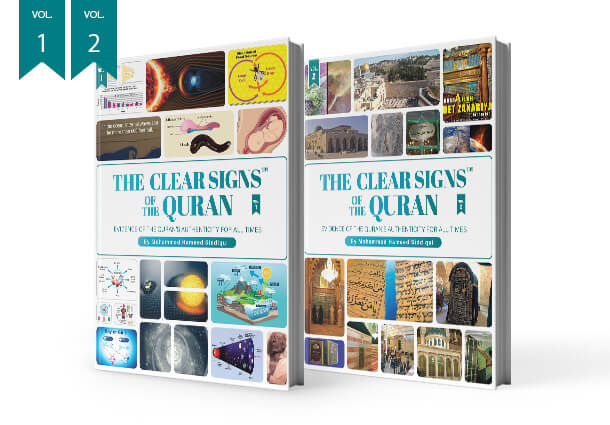 Mohammed Hameed Siddiqui has conducted his multidisciplinary research in several branches of science and humanities that exhibit the Clear Signs in the Quran in the Physical Universe, the Social and Ethical Sphere, the approved practices in Islam, and the events in prophets’ stories. This includes fields of study such as astrophysics, autophagy, the birth of the universe, dermatoglyphics, cosmology, embryology, genetics, geology, the history of Abrahamic prophets, inheritance in Islam, the linguistic coherence of the Quran, the proofs of its unaltered text of God, melittology, oceanography, the prediction of Prophet Muhamad (PBUH) in previous holy books, the reality of jinn, and space-time relativity.
Mohammed Hameed Siddiqui has conducted his multidisciplinary research in several branches of science and humanities that exhibit the Clear Signs in the Quran in the Physical Universe, the Social and Ethical Sphere, the approved practices in Islam, and the events in prophets’ stories. This includes fields of study such as astrophysics, autophagy, the birth of the universe, dermatoglyphics, cosmology, embryology, genetics, geology, the history of Abrahamic prophets, inheritance in Islam, the linguistic coherence of the Quran, the proofs of its unaltered text of God, melittology, oceanography, the prediction of Prophet Muhamad (PBUH) in previous holy books, the reality of jinn, and space-time relativity.
Click Here to Order the Book: "The Clear Signs Of The Quran"
( Source: This article is a book excerpt from "The Clear Signs Of The Quran" and is being republished with permission from the author and publisher. The Clear Signs™is a registered trademark of Al-Furqaan Foundation, a 501(C)(3) tax-exempt non-profit organization. Copyrights © 2023. All rights reserved. )
Footnotes
Topics: Geology, History, Islam And Science, Miracles Of The Quran, Natural Disasters, Oman, Prophet Hud, Saudi Arabia, Yemen Values: Education, Knowledge, Wisdom
Views: 4515
Related Suggestions





